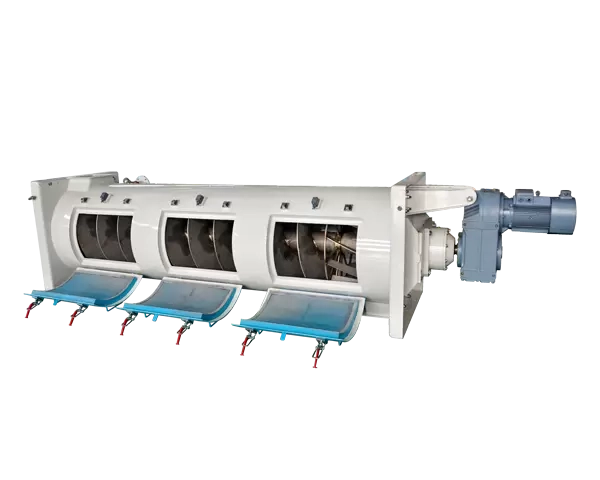The pellet quality and pellet morphology of feed pellet mill are important factors affecting the feed processing quality and nutritional value. In the feed processing industry, how to ensure the pellet quality and pellet shape of feed pellet mill has become a topic of great concern. This article will explore it from multiple aspects in order to provide some useful references and suggestions for related industries.

First of all, ensuring the particle quality and particle morphology of feed pellet mills needs to start with the design and manufacturing of the equipment itself. A high-quality feed pellet mill should have reasonable structural design and sophisticated manufacturing technology to ensure that the pellet machine can complete the pelletization work stably and efficiently during operation. At the same time, the mold design and manufacturing of the pellet machine are also crucial. The quality and accuracy of the mold directly affect the shape and quality of the pellets. Therefore, manufacturers should pay attention to these details when designing and manufacturing feed pellet mills to ensure the stability and reliability of the equipment.
Secondly, the guarantee of particle quality and particle morphology of feed pellet mill also needs to rely on scientific and reasonable granulation process. During the production process, operators should reasonably select the working parameters of the pellet machine based on different raw material characteristics and processing requirements, such as the pellet machine's rotational speed, feed speed, mold pressure, etc., to ensure that the pellet machine can evenly and fully process the raw materials. Pressed into ideal granular form. In addition, for some special raw materials, such as raw materials with high moisture content, operators need to carry out appropriate pretreatment according to the actual situation to ensure that the pellet machine can work normally and ensure the quality of the pellets.
In addition, the guarantee of particle quality and particle morphology of feed pellet mill also needs to rely on strict quality control and testing methods. During the production process, manufacturers should establish a complete quality management system and conduct comprehensive monitoring and testing of raw materials, production processes and finished products to ensure that each batch of granules produced meets relevant quality standards and requirements. At the same time, manufacturers should also establish a complete after-sales service system, promptly respond to customer needs and feedback, and handle and improve some quality issues in a timely manner to improve the overall quality level of the pellet machine.
In addition, the guarantee of feed pellet mill pellet quality and pellet morphology also needs to rely on the formulation and implementation of industry standards and specifications. Relevant industry associations and organizations should strengthen the standardization work of feed pellet mills, formulate relevant evaluation standards for pellet quality and pellet morphology, and handle and rectify products that do not meet the standards accordingly. At the same time, industry associations and organizations should also strengthen supervision and guidance of feed pellet mill manufacturers and users, and promote the entire industry to develop in a more standardized and standardized direction.
In short, ensuring the particle quality and particle morphology of feed pellet mills is a comprehensive project that requires the joint efforts of feed pellet mill manufacturers, operators, industry associations and organizations. Only through continuous technological innovation and management innovation can we better ensure the particle quality and particle shape of feed pellet mills and provide better support and guarantee for the development of the feed processing industry.